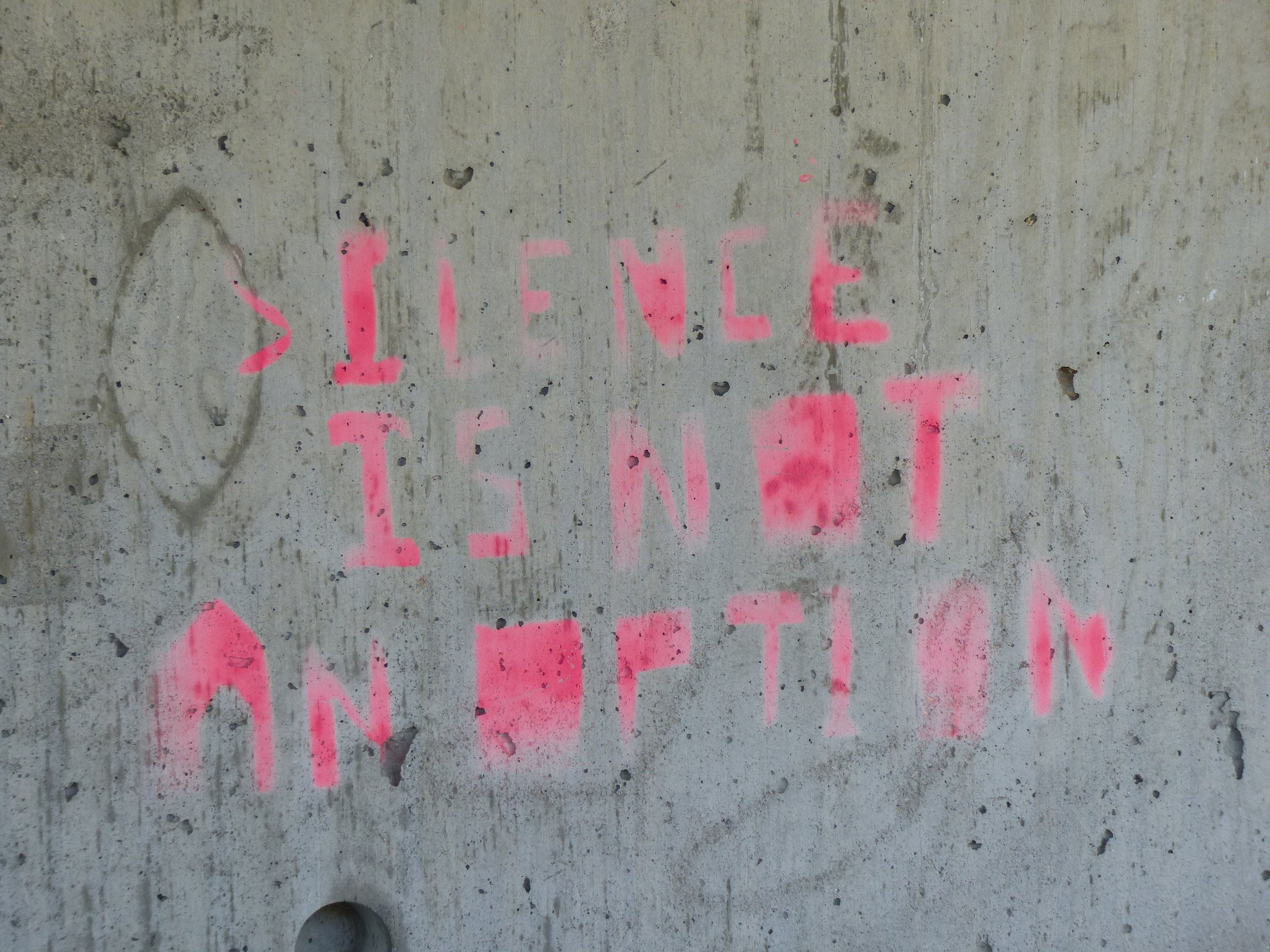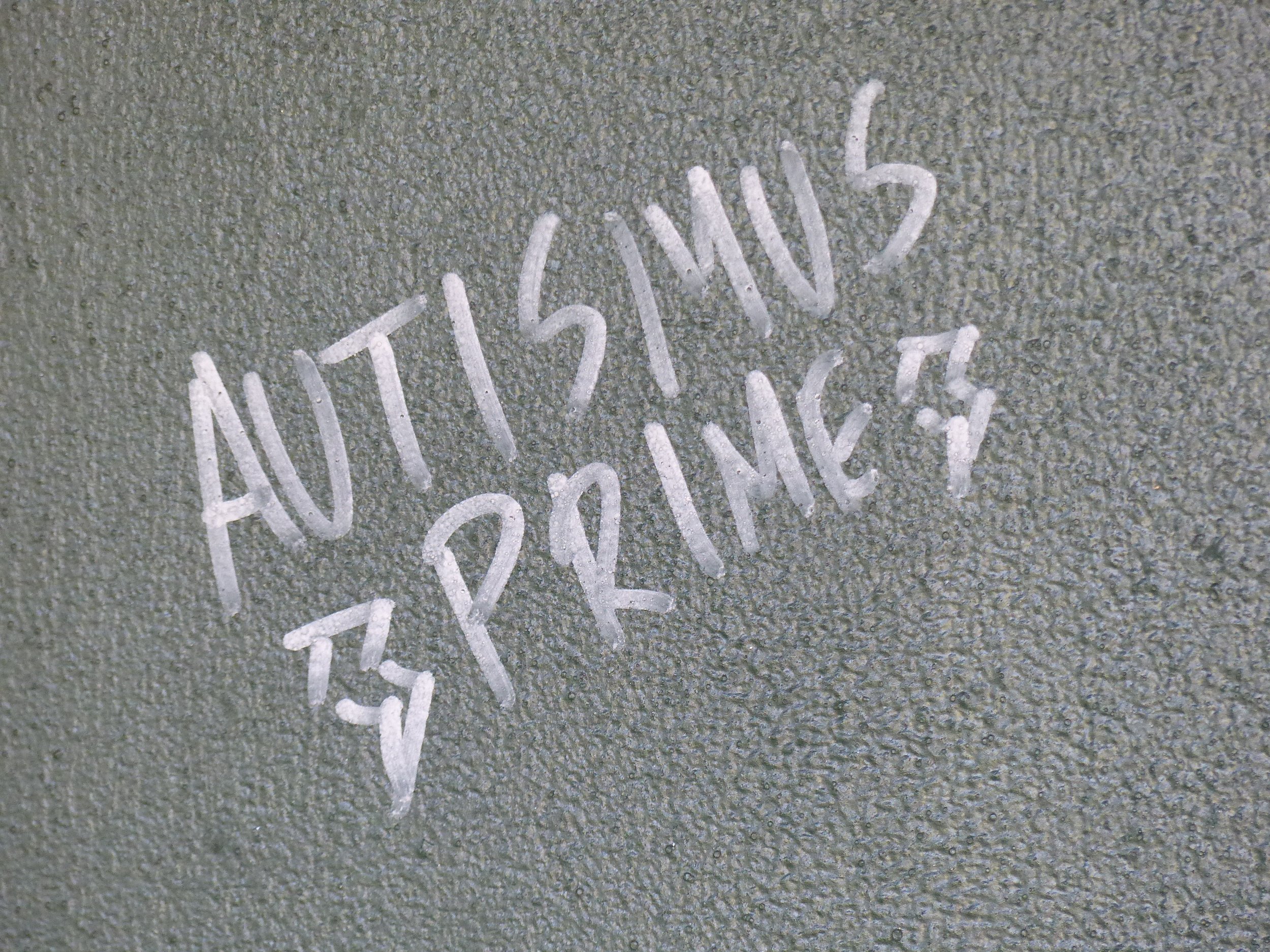Graffiti at Warren Wilson College Sparks Debate Amidst Removal
Ryleigh Johnson | April 16, 2025
Around the Warren Wilson College (WWC) campus, graffiti is ever present, from the stencils found on the outside of Kittredge Theater to poems scrawled in Sharpie on library bathroom stalls. The student body of WWC has a variety of opinions on the value, appropriateness and ethics of graffiti as public art, especially as efforts to remove graffiti have increased.
Photo by Kai Goldstein
A member of the Library Crew, who wished to remain anonymous, was one of the individuals on campus tasked with this removal. Many of the sources The Echo spoke to regarding graffiti wished to remain anonymous for fear of backlash, whether backlash regarding their participation in graffiti creation or graffiti removal. The Library Crew member was instructed by their crew supervisor, Teresa Imfeld, to clean graffiti from the bathroom stalls in the Pew Learning Center & Ellison Library.
“[Removing the graffiti] was annoying, and I think at that moment, I finally defined what exactly [is] the difference in my head between graffiti I'm cool with and graffiti I'm not cool with,” the Library Crew member said. “It's whether or not it's inside a building….When I'm inside, especially in the library, or on the every surface in the dorm bathrooms, I'm like, ‘This is annoying’...If it's not Library Crew, Paint Crew has to send people out and clean it up.”


For others who have been tasked with cleaning up graffiti, the issue is not the graffiti itself, but rather that they are asked to cover other’s art up. Finn Zwemer, a junior on the Paint Crew, is not particularly bothered by the graffiti on campus.
“I personally am really pro- most of the graffiti, one of the main reasons that I came here…was on my tour, there was graffiti everywhere,” Zwemer said. “And I was like, ‘Ah, a campus of open-minded, free-spirited people. This is so awesome.’”





Zwemer feels that the increased effort to cover up graffiti is emblematic of the WWC’s overall devaluation of arts programs and arts students.
“I think that the getting rid of the graffiti is a really good example of how…the arts are under appreciated and underfunded here, because it's a radical form of expression that's art, not for a utilitarian purpose, which is what I kind of feel like Warren Wilson prioritizes,” Zwemer said.
He also added that he feels the recent increase in graffiti removal is part of a larger process attempting to make WWC appeal to a wider student base.
“I just think that the administration is sanitizing Warren Wilson in an effort to make it more palatable to the public,” Zwemer said. “I think that that's kind of stupid, considering there are signs all around campus that are like, ‘We're different. ’ Are we? Because I don't think we are.”
Photo by Kai Goldstein
An anonymous member of the Paint Crew shared that a mandate to remove graffiti, which had not traditionally been a large part of the Paint Crew’s work, was handed down from the administration after current president Damián Fernández took office.
“We only do [more graffiti removal] now because Damián wants to get rid of it, because he wants to beautify campus,” the Paint Crew member said. “That's the term that Dave [Marshall, supervisor of the Paint Crew] has used. I'm assuming he's directly quoting from Damián, like ‘campus beautification.’”
Photo by Kai Goldstein
Others in the WWC campus community would dispute the idea that removing graffiti inherently makes the campus more beautiful.
“Graffiti is the unchained art of a beautiful community and I think it's productive to keep it,” said a freshman who wished to remain anonymous.
They also emphasized that graffiti can be a way to make empty parts of campus more special.
“Part of the beauty of graffiti as a culture is making use of space that's either neglected or overlooked,” the freshman said. “I think there's a lot of that on campus, spots like the side of the pedestrian bridge or up on buildings or generally just unused spaces that wouldn't harm anyone if there's art there, and I think a lot of people would appreciate it.”
Photo by Ryleigh Johnson
A sophomore, who has created graffiti on campus and also wished to remain anonymous expressed similar feelings, along with the idea that the creation of graffiti in and of itself can be an activity that builds community.
“My partner and I made a piece of Jensen bathroom [graffiti]...it's the Garfield and Plankton,” the sophomore said. “That was a beautiful moment and it was a very fun thing to do, and I think that everyone should have the chance to engage in that and not think that their work is going to be erased.”
Photo by Ryleigh Johnson
Multiple people who spoke to The Echo expressed appreciation for communal spaces, like the chalkboard in Cowpie Cafe, where students can participate in public art without leaving a permanent mark. Despite this appreciation, some of those same students insisted that unsanctioned forms of public art still have their place along with sanctioned ones.



“I think the main thing that makes that different is that more people will engage in it [public art in approved mediums] because it's sanctioned, and so it's like more of a big amalgamation of different things,” the anonymous sophomore said. “But if you want to put up an individual art piece, or if you want to hold conversation with people, I think it's still important to be able to graffiti a bathroom.”
The Echo reached out to the President’s office for comment regarding their alleged campus beautification efforts but received no response. The story will be updated to reflect as information becomes available.






